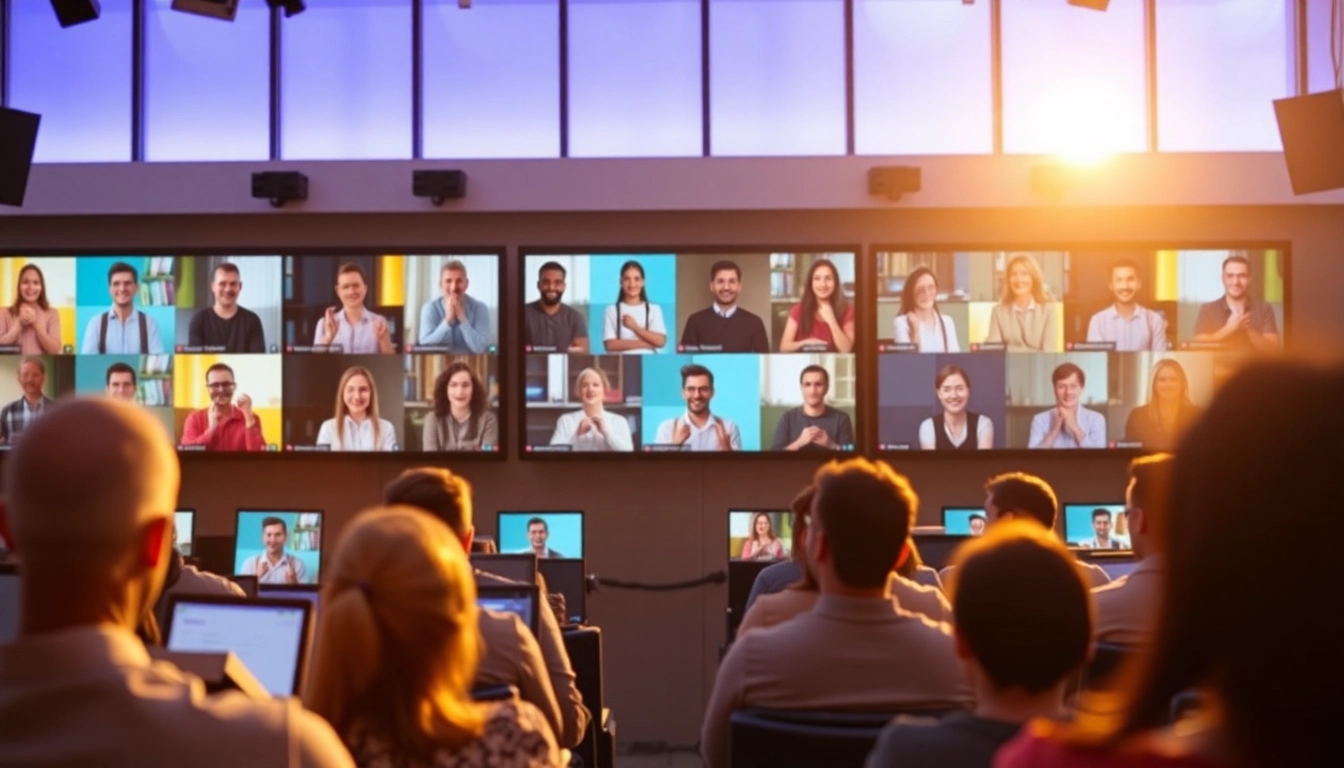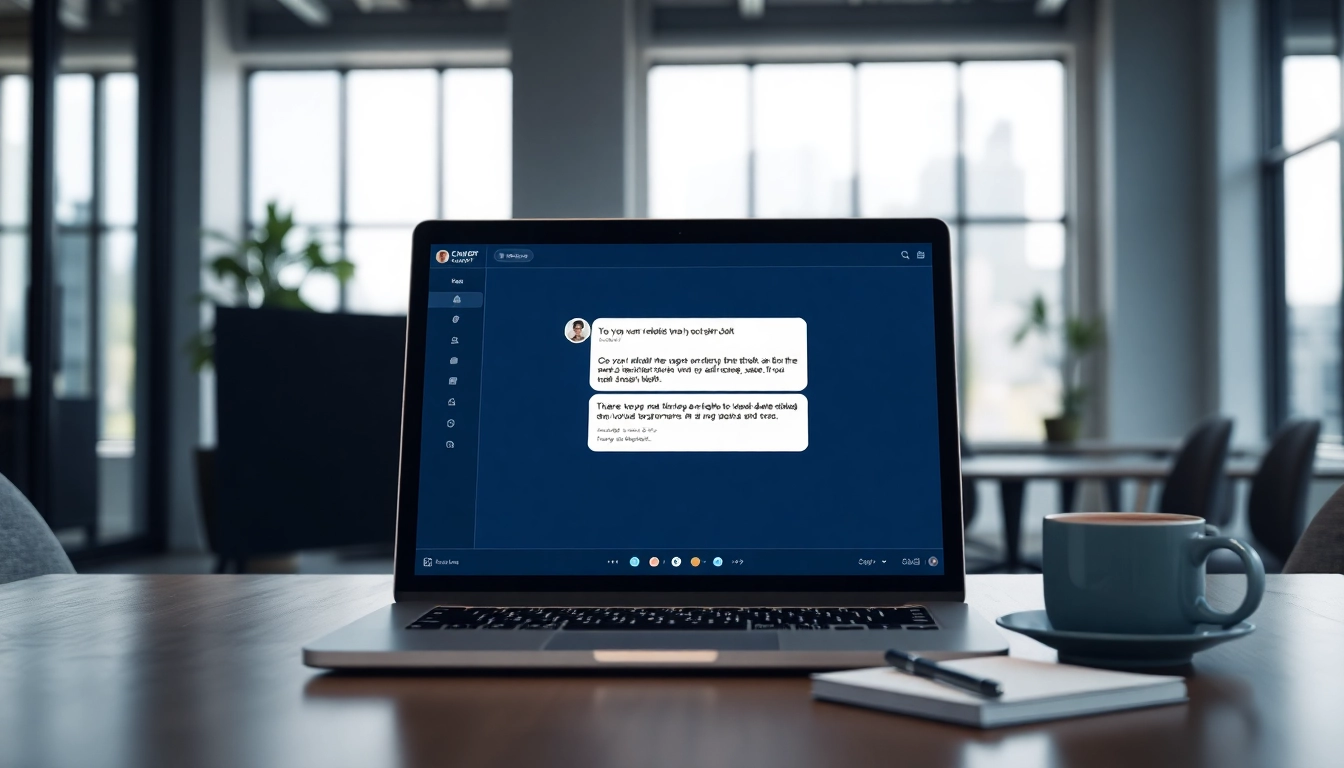Understanding the Virtual Audience System
What is a Virtual Audience System?
A Virtual Audience System (VAS) is an innovative tool designed to facilitate real-time interaction and engagement between performers and their audience over digital platforms. Encompassing various technologies such as video conferencing, audience polling, and interactive virtual environments, VAS allows users to create immersive experiences that replicate the excitement of a live event. As entertainment and information sharing increasingly shift to online formats, understanding and leveraging a Virtual Audience System is becoming essential for entertainers, educators, and businesses alike.
Benefits of Using Virtual Audience Systems
Employing a Virtual Audience System comes with numerous benefits that enhance the user experience and facilitate effective engagement. Some key advantages include:
- Broader Reach: With a VAS, you can connect with a global audience without geographical limitations. This increases your potential viewer or participant base significantly.
- Cost-Effectiveness: Virtual systems often reduce logistical costs associated with hosting physical events, such as venue rental, travel, and accommodation for participants.
- Interactive Features: Virtual Audience Systems offer tools like live polling, Q&A sessions, and feedback systems that encourage active participation from the audience.
- Data Collection: These systems can collect and analyze audience data to improve future engagements by assessing preferences and behaviors.
- Flexibility and Convenience: Participants can engage from the comfort of their homes or offices, making attendance more accessible to various demographics.
Common Applications in Various Industries
Virtual Audience Systems have found use in numerous sectors, transforming traditional practices into dynamic, engaging experiences:
- Entertainment: Musicians, comedians, and performers utilize VAS for virtual concerts, allowing fans to enjoy live shows with interactive elements.
- Education: Schools and universities employ these systems for virtual classrooms, webinars, and interactive training sessions, enhancing student engagement.
- Corporate Events: Many organizations leverage VAS for conferences and workshops, providing networking opportunities and interactive sessions to foster collaboration and creativity.
- Marketing: Brands utilize virtual audience systems for product launches, engaging customers through live demonstrations, Q&As, and instant feedback.
Key Features to Look for in a Virtual Audience System
User Interface and Experience
The user interface (UI) and overall user experience (UX) are pivotal in a Virtual Audience System. A well-designed interface enables both hosts and attendees to navigate the system easily. Key features to consider include:
- Intuitive Navigation: The system should be straightforward, making it simple for participants to join events, ask questions, and interact with content.
- Responsive Design: With users accessing the system from various devices, a responsive design ensures that the platform works well across desktops, tablets, and smartphones.
- Visual Appeal: Aesthetically pleasing design engages users, helping maintain their interest throughout the event.
Integration with Other Tools
For a Virtual Audience System to function seamlessly, it should integrate with other essential tools and platforms. Consider the following:
- Social Media Links: Allowing users to share experiences on social media helps extend the reach and visibility of events.
- CRM Systems: Integration with customer relationship management systems can enhance interaction by enabling personalized engagement based on user data.
- Payment Gateways: For paid events, secure integration with various payment systems is crucial for smooth transaction processes.
Data Security and Privacy Considerations
As more organizations utilize Virtual Audience Systems, it is vital to prioritize data security and user privacy. Essential considerations include:
- Encryption: Ensure that all communications and data transfers are encrypted to protect sensitive information.
- Compliance: Adhere to data protection regulations, such as GDPR or CCPA, to safeguard users’ privacy and avoid hefty penalties.
- User Consent: Implement protocols for obtaining user consent for data collection and processing, ensuring transparency in operations.
Implementing Your Virtual Audience System
Steps for Effective Setup
Implementing a Virtual Audience System requires careful planning and execution. Here are key steps for setting up your VAS effectively:
- Define Your Objectives: Clearly outline the goals of using the VAS, whether it’s to engage audiences, gather feedback, or host educational sessions.
- Select the Right Platform: Choose a VAS that aligns with your needs, focusing on features relevant to your goals.
- Test the System: Before the event, conduct test runs to troubleshoot potential issues and familiarize yourself and your team with the interface.
- Create Engaging Content: Develop content tailored for virtual delivery, including visuals, interactivity, and pacing to maintain audience engagement.
- Promote the Event: Utilize marketing channels to build anticipation and inform potential attendees about the event details.
- Gather Feedback: After the event, solicit feedback to assess the participant experience and identify areas of improvement.
Best Practices for Engagement
To maximize audience engagement during virtual events, incorporate the following best practices:
- Interactive Elements: Integrate polls, quizzes, and discussions to engage participants actively throughout the presentation.
- Facilitated Networking: Create breakout sessions or networking opportunities to allow attendees to connect with each other.
- Encourage Participation: Prompt questions and discussions to keep attendees involved and encourage a lively atmosphere.
- Visual and Auditory Stimuli: Use high-quality visuals, animations, and audio elements to enhance the presentation and maintain user interest.
Common Challenges and Solutions
While Virtual Audience Systems offer numerous advantages, challenges can arise. Here are common issues and their solutions:
- Technical Difficulties: Connectivity issues can disrupt the experience. Solution: Invest in high-quality infrastructure and have technical support available during events.
- Audience Disengagement: Participants may lose interest. Solution: Incorporate interactive features and regularly check in with the audience to keep them engaged.
- Underutilized Features: Users may not utilize available features. Solution: Provide clear instructions and demonstrations on how to interact with the system effectively.
Evaluating Your Virtual Audience System’s Performance
Key Metrics to Assess Engagement
Measuring the success of your Virtual Audience System involves tracking specific metrics that indicate engagement levels. Key metrics include:
- Attendance Rates: Monitor how many participants joined compared to registrations.
- Engagement Rates: Calculate the number of interactions per participant, such as questions asked or polls answered.
- Retention Rates: Track how many participants stayed for the entire event versus those who left early.
Feedback Mechanisms for Improvement
To enhance your Virtual Audience System for future events, implement regular feedback mechanisms, including:
- Post-Event Surveys: Distribute surveys to attendees to gauge satisfaction levels and receive constructive feedback.
- Real-Time Polls: Solicit instant feedback during the event to understand audience perceptions and make real-time adjustments.
- Focus Groups: Engage attendees in discussions post-event to gain deeper insights into their experiences.
Adjusting Strategies Based on Data
Utilizing collected data is vital for future improvements. Consider these strategies for data-driven adjustments:
- Analyze Trends: Regularly assess engagement metrics and feedback to identify patterns and trends influencing audience behavior.
- Iterate Content Delivery: Use feedback to adjust your presentation styles, formats, or topics for more effective communication.
- Test New Features: Continually explore and test new features and tools within your VAS to enhance overall user experience.
Future Trends in Virtual Audience Systems
Emerging Technologies Impacting Virtual Engagement
The landscape of Virtual Audience Systems is constantly evolving, influenced by several emerging technologies. Anticipated trends include:
- Artificial Intelligence: AI will enhance personalization, enabling systems to recommend content based on user behavior and preferences.
- Augmented and Virtual Reality: These technologies can create immersive experiences, transforming virtual events into engaging and interactive environments.
- 5G Connectivity: The rollout of 5G networks promises faster connections and improved streaming quality, enhancing the overall experience for participants.
Predictions for User Interaction Evolution
As technology advances, user interaction within Virtual Audience Systems is set to evolve:
- Enhanced Interactivity: Future platforms will incorporate more interactive elements that replicate the spontaneity of live events.
- Increased Personalization: Users will experience tailored content and curated engagements based on past behavior and preferences.
- Community Building: Virtual Audience Systems will focus more on creating communities where users can connect and collaborate beyond single events.
Preparing for the Next Generation of Virtual Audiences
Organizations should prepare for shifts in audience expectations and preferences by adopting the following strategies:
- Stay Informed: Follow industry trends and emerging technologies to ensure your VAS remains cutting-edge.
- Invest in Training: Equip staff and users with the skills necessary to navigate new tools and features effectively.
- Engage in Innovation: Regularly seek feedback and ideas from your audience to foster an environment of continuous improvement and innovation.



